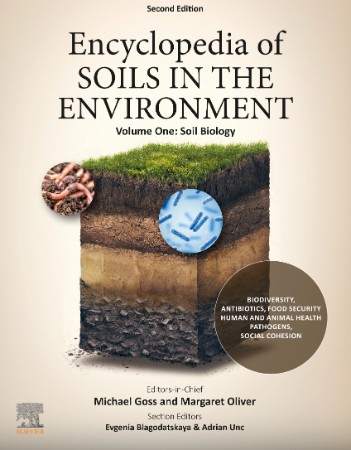Encyclopedia of Soils in the Environment - Michael J Goss

pdf | 744.23 MB | English| Isbn:9780128229743 | Author: Michael J. Goss (Editor), Margaret A. Oliver (Editor) | Year: 2023
Description:
Encyclopedia of Soils in the Environment, Second Edition, Five Volume Set updates and expands the previous version to ensure coverage of topics relevant to current world problems such as population pressure, food security and global change. Since publication of the previous edition there has been a huge change in our ability to carry out bioinformatics related to soil organisms and their functioning. Major developments in next generation DNA sequencing techniques have made it possible to identify both the diversity of microbial populations and their functioning. Furthermore, it allows the management of microbes within the soil. Imaging is changing our perceptions and improving our knowledge of soil aggregation. This also applies to remote and proximal sensing of laboratory and field soils, which is undergoing rapid change. Soil physics is a core area of soil science, but new techniques and technology have increased our understanding of processes.
This reference work covers the entire field of soil science, bridging the gap between basic science and applications, and is designed to serve students and expert researchers. It is organized around four core topics, the main components of soil science – biology, chemistry, physics and environment and management.
Soil science is becoming a crucial subject as world governments realize its importance in food production, water quality, flood control, greenhouse gas management, source of antibiotics and other drugs. As such this work is of interest not only to academics but to policy makers, government researchers and the geographical and environmental community who are not necessarily in research roles but need information on soil to support their core work.
This reference work covers the entire field of soil science, bridging the gap between basic science and applications, and is designed to serve students and expert researchers. It is organized around four core topics, the main components of soil science – biology, chemistry, physics and environment and management.
Soil science is becoming a crucial subject as world governments realize its importance in food production, water quality, flood control, greenhouse gas management, source of antibiotics and other drugs. As such this work is of interest not only to academics but to policy makers, government researchers and the geographical and environmental community who are not necessarily in research roles but need information on soil to support their core work.